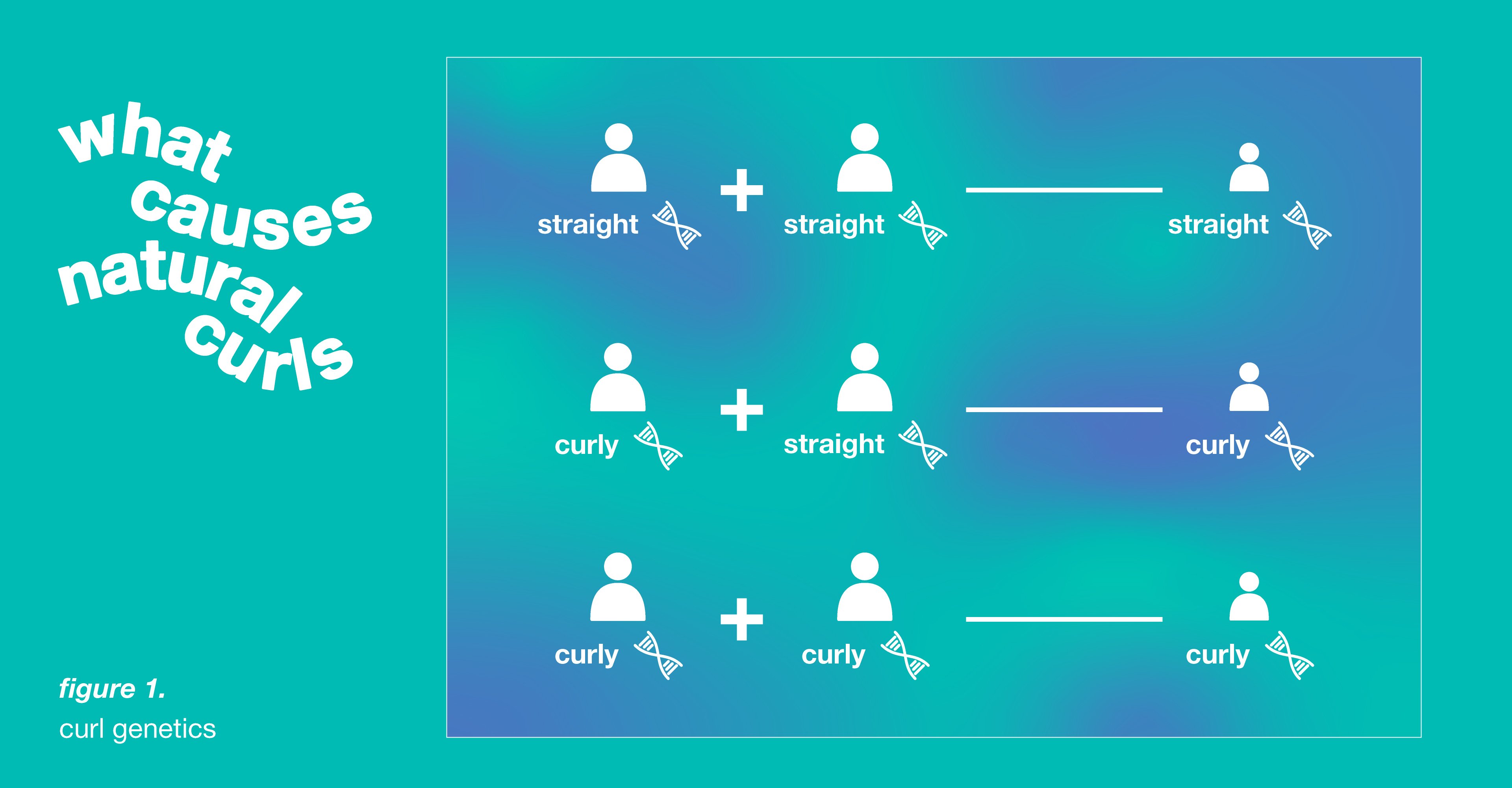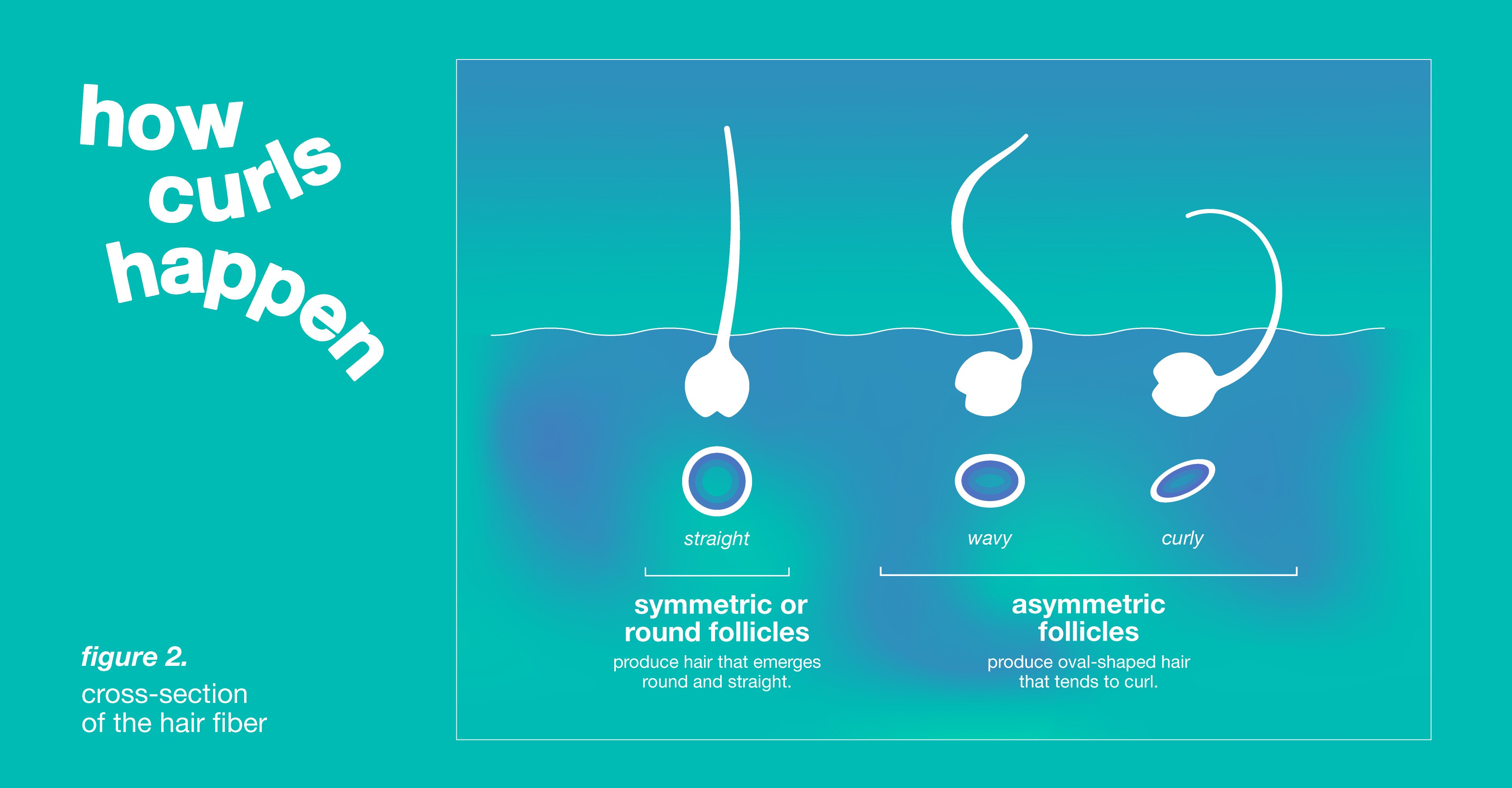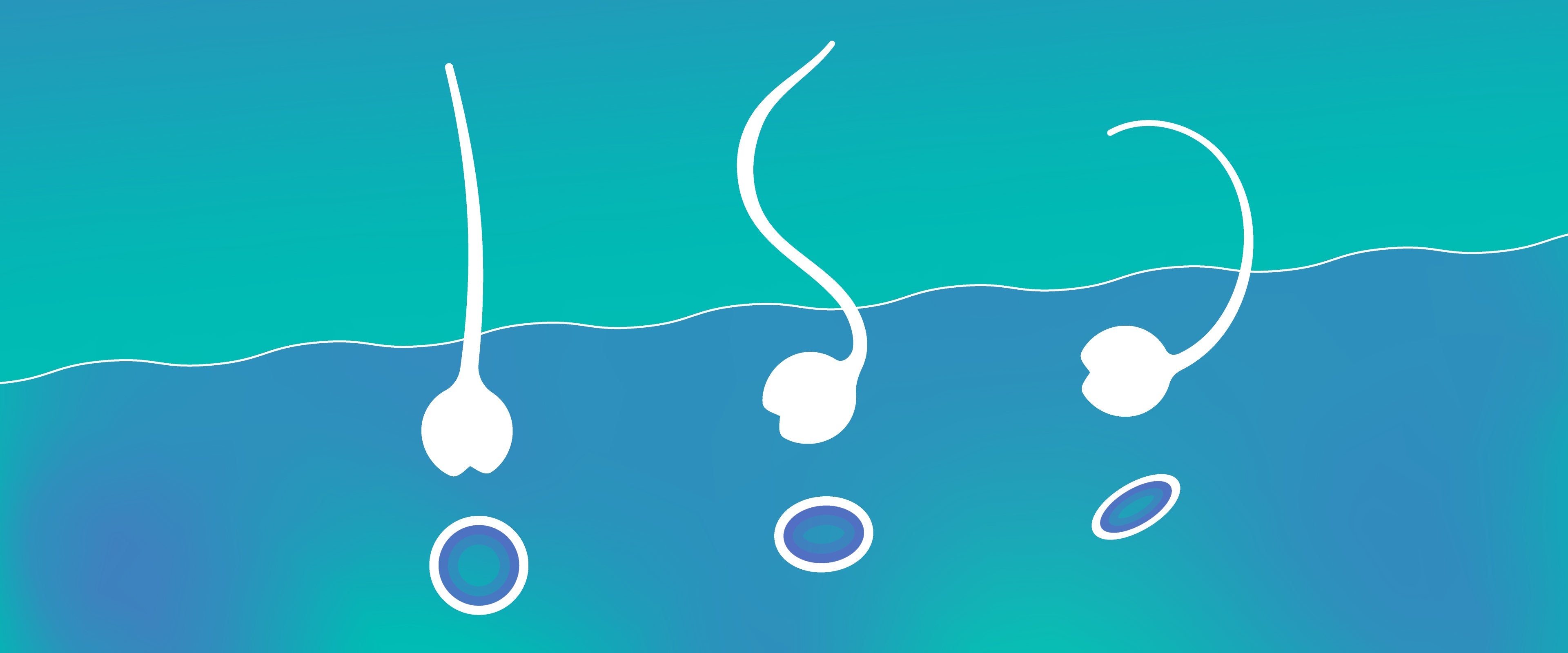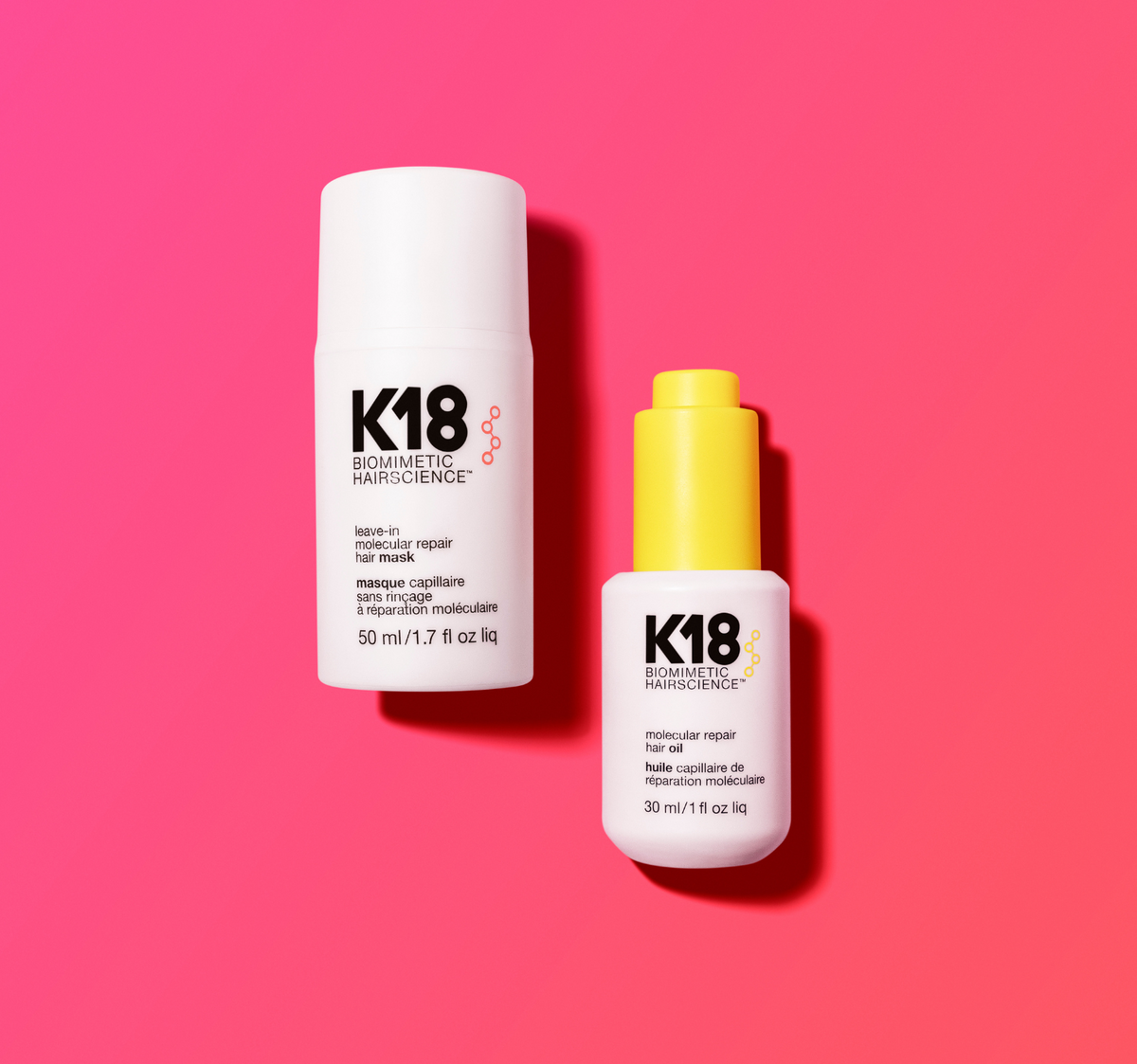We’ll go a step further. What are curls? Well, we’ll tell you one thing. They’re lots of science.
Let’s dive in.
To set the record straight, or uh, wavy… “curly” hair describes a wide range of hair fiber shapes from twists and crimps to waves and coils.
Haircare professionals use a scale from 1 (straight) to 4 (super curly-coily) to describe hair type. This method was first created by hair stylist Andre Walker and is based on numbers corresponding to shape (1 = straight, 2 = wavy, 3 = curly, 4 = coily) and letters corresponding roughly to hair thickness/character of shape (A = fine/loose, B = medium, C = thick/tight).
Scientists have historically categorized hair into three major ethnic types—Asian, Caucasian, and Afro—which have distinct characteristics sorted by rough global geographic location. Of course, this is a drastic oversimplification, as it excludes many, and most people have hair with hybrid qualities anyway.
Newer research proposes moving away from that classification to something a little more inclusive called the segmentation tree analysis method (STAM) that classifies hair into eight curl-type groups based on hair curvature (I - straight to VIII - tightly curly). And since we love all hair, we like this method.
SO, WHAT CAUSES NATURAL CURLS?
The answer is genetics.
Curly hair is considered a “dominant” gene trait, meaning if one of your parents had curly hair, they gave you two curly-haired genes, and you’re more likely to have curls. On the other hand, straight hair is considered “recessive.” We’re bringing it all the way back to high school biology.
Genetics determines the shape of your follicles - the complex organs that regulate hair growth and produce hair.

HOW DOES THE CURL HAPPEN?
Naturally curly hair is due to the shape of the follicle. People with symmetric or round follicles produce hair that emerges round and straight. People with asymmetric follicles produce oval-shaped hair that tends to curl.
The follicle is complex because it consists of 20 different cell types (wow), each with a specific function. Hair starts growing at the bottom of a hair follicle. The hair root consists of protein cells nourished by blood from nearby blood vessels. As more cells are created, hair grows out of the skin and reaches the surface.
From The Dynamic World of Hair, you might remember that hair is 95 percent keratin. Keratin’s properties are determined by the specific arrangement of strings or chains of amino acids.
When you look at a cross-section of hair through a microscope, straight hair has a more round, uniform shape with an even (or symmetrical) distribution of keratin. Curlier hair has a more oval or flattened shape with an uneven distribution of keratin - the keratin structures form asymmetrically, with more of a certain type on the inside of the curve of a curled hair (say that 5 times fast). Curly hair can even have a different number of cuticle cells on the inside and outside of the curve.
You’ll note both straight and curly hair are comprised of keratin, which is why is not good for strength of all hair types when those keratin chains break. So while the shape or distribution of keratin may be different, on a molecular level all hair is the same.

Ok, cool so now that we’ve covered shape, let’s address some of those curly hair “facts” floating around out there and see if the science matches up.
MINI CURLY-COILY MYTH BUST
CURLY HAIR IS WEAKER THAN STRAIGHT HAIR: FALSE…sort of
The structural proteins in curlier hair are no weaker than those in straight hair—the proteins (or polypeptide chains) in hair are the same. However, curlier hair is more vulnerable to breakage from grooming/brushing/styling because of the torsional strain (i.e. pulling it out of its natural shape, like stretching a spring) that mechanical manipulation causes. Taking a comb or brush to straight hair helps get out tangles, but stretching a curly hair deforms and strains the structure far more than stretching a straight hair.



